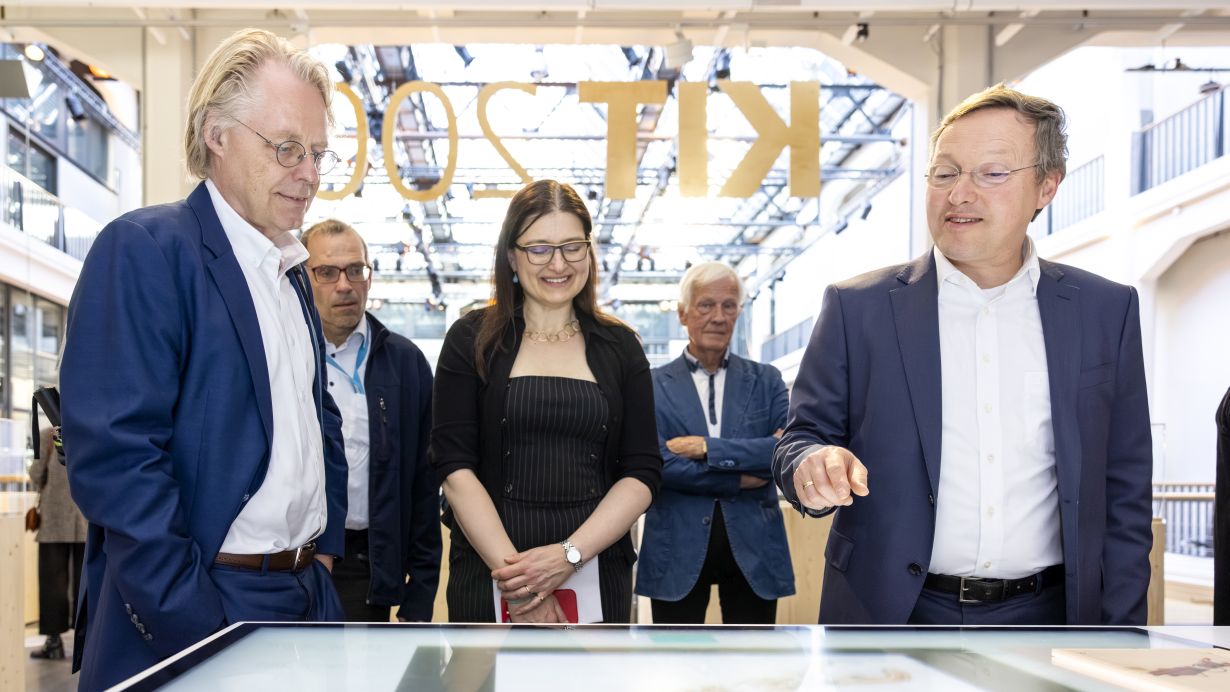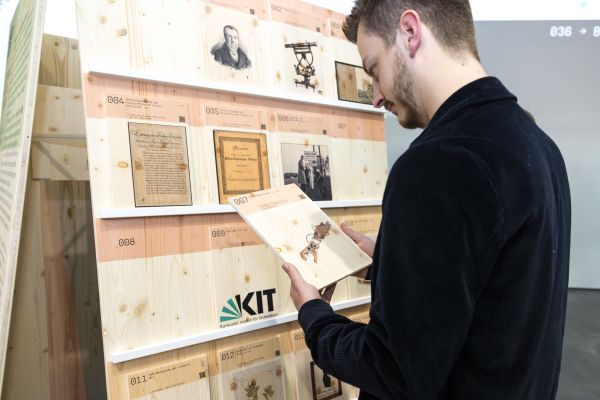
Scientific equipment, everyday items, and true rarities have been on display since April 11, 2025, in the anniversary exhibition for the Karlsruhe Institute of Technology (KIT) at the ZKM | Center for Art and Media in Karlsruhe. The exhibition, entitled "200 Years of KIT - 100 Objects. Parts of the Whole. Selected Objects from the History of KIT," will run until October 19, 2025. Admission is free of charge. It provides insights into KIT's history as a scientific institution, with personal anecdotes and glimpses behind the scenes.
Among the exhibits awaiting visitors are a hydrogen-powered 1980s VW bus, mechanical models from 1860, iconic designs like the Sistrah lamp from 1930, a robot from the modern ARMAR family, and a variety of historic documents and artifacts. An online presentation has been woven into the exhibition to enhance the in-person experience with further objects for visitors to discover along with interesting facts about KIT's 200-year history.
200 Years of Scientific Treasures
Many KIT staff, alumni and other associates responded to the "call for objects" by contributing to the trove of items and stories for the exhibition, which not only reflects the research institution's emergence and growth but also documents study, work and life at KIT from its inception to the present day. Thus the exhibition also sheds light on KIT's current identity as the Research University in the Helmholtz Association and one of Germany's oldest and largest institutions for engineering and natural sciences.

plaques on the interactive media table to receive information and stories about 200
years of KIT. (photo: Laila Tkotz, KIT)
To complement the exhibition, a detailed illustrated volume will be published in July to present KIT's history and the stories behind the 100 objects.
The exhibition will run until October 19, 2025, at the ZKM in Karlsruhe. Admission is free of charge. The entire exhibition with all 100 objects will remain accessible online for five years. (bst)
Being "The Research University in the Helmholtz Association", KIT creates and imparts knowledge for the society and the environment. It is the objective to make significant contributions to the global challenges in the fields of energy, mobility, and information. For this, about 10,000 employees cooperate in a broad range of disciplines in natural sciences, engineering sciences, economics, and the humanities and social sciences. KIT prepares its 22,800 students for responsible tasks in society, industry, and science by offering research-based study programs. Innovation efforts at KIT build a bridge between important scientific findings and their application for the benefit of society, economic prosperity, and the preservation of our natural basis of life. KIT is one of the German universities of excellence.






